Mount Everest, located in the Himalayan Mountain Range, is the tallest mountain in the world. It reaches an elevation of 29,032 feet. The mountain itself is nestled between Nepal and Tibet, in an autonomous region of China. Hundreds attempt to climb the peak each year, though many fail in the process.
It’s an astonishingly tough climb that features a variety of weather patterns, terrain, and of course, wildlife. The cold and steep mountain is home to a few select animals and birds that find solace in the rigorous mountainside land. Though living in such a tough elevation is not common, these species are fit for the climate.
The elevation at the top of the mountain is a bit too high for most animals and birds to survive and thrive, but all of the animals listed below enjoy their homes at various points on the mountain. Living above 20,000 feet in elevation is difficult due to the permanent snow. Few plants can even persist through the terrain that high up! Most of the species on this list live below 15,000 feet of elevation. However, for some, the season makes an impact, and they’ll move to lower elevations during the cold winter months.
To learn about the amazing animals that live on Mount Everest, check out this list. They’re diverse and beautiful, with an inspiring resiliency to difficult terrain. Here are twelve of the animals that live on Mount Everest:
1. Snow Leopard

Interestingly enough, snow leopards don’t roar like many of their big cat relatives.
©Asmakhan992/Shutterstock.com
The rare snow leopard is one of the amazing species that survives on Mount Everest. These large cats typically enjoy residing at an elevation of between 10,000 and 15,000 feet. They’re a vulnerable species, with only 6,000 remaining in the world. It’s not common to spot one on the mountain, but if you do, be sure to proceed with caution.
Snow leopards are a solitary species that are well-equipped to traverse the snow. Their large paws enable them to move through tough snow with ease. The cats live low on the mountain, so they don’t see the worst of the Mount Everest weather. However, even the base of Mount Everest sees extremely freezing temperatures.
2. Himalayan Black Bear

Himalayan
black bears are omnivores.
©I Wayan Sumatika/Shutterstock.com
The Himalayan black bear is another staple of the Mount Everest environment. These species are also endangered, with less than 2,000 remaining in the entire world. It’s not common that you’ll see one of these creatures on your trek up the mountain, but if you did, it would be below an elevation of 14,000 feet. They prefer the forested regions of Mount Everest.
While this species of black bear is pretty comfortable in freezing temperatures, hibernation helps them survive the extra chilly stretches of the year. They’ll hibernate for the winter, emerging in the spring and migrating to warm areas where they can recover their strength.
3. Himalayan Tahrs
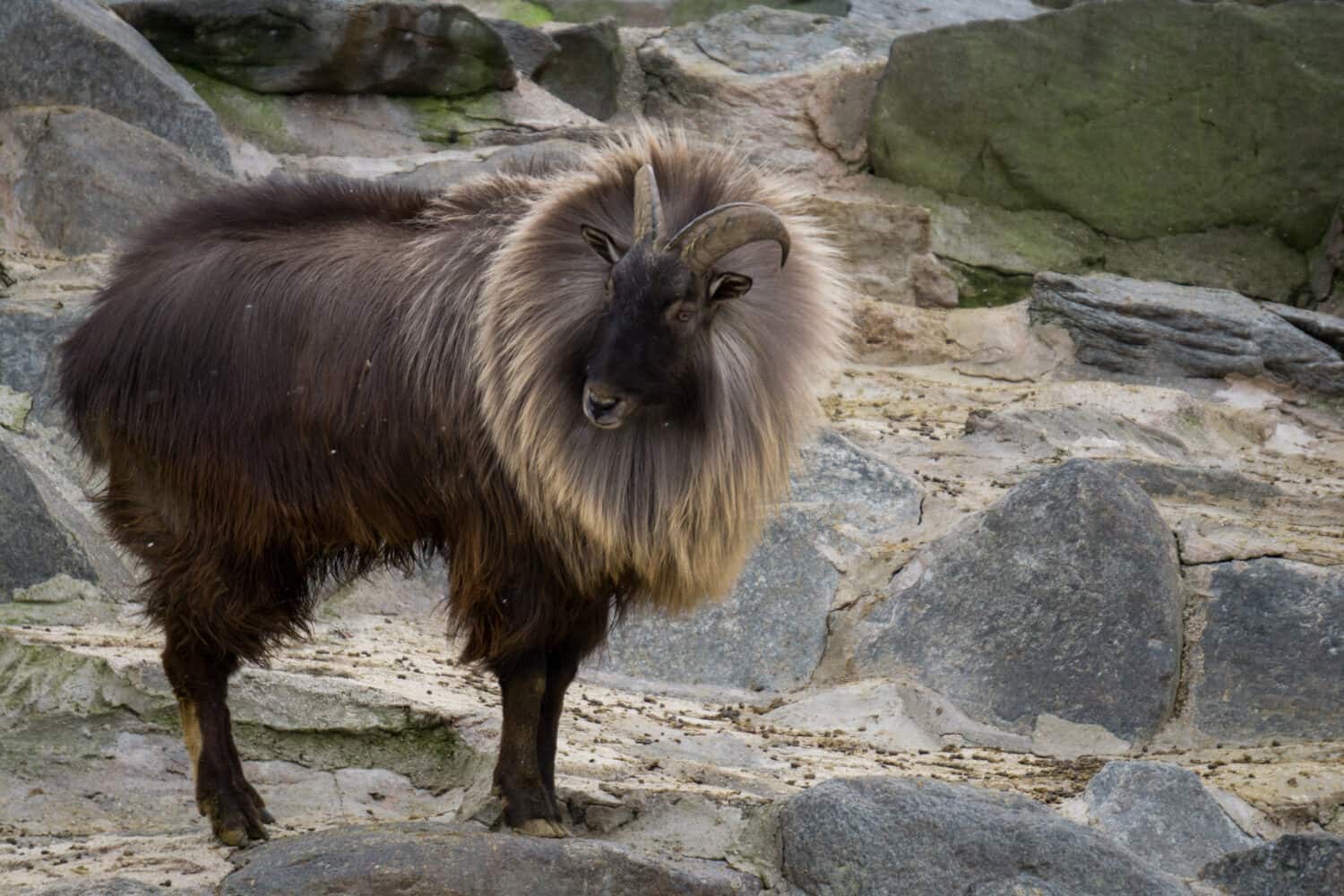
Himalayan tahrs have an undercoat that makes it easy to be comfortable in intense temperatures.
©Emil O/Shutterstock.com
The beautiful Himalayan tahr is another important species to the ecosystem of Mount Everest. They’re extremely comfortable with subzero temperatures and reach up to 16,000 feet of elevation on the mountain. Their thick coats help to protect them from the elements. Their hooves are flexible, equipping the tahr to move through complicated, rocky terrain.
While these species look a bit intimidating, they’re herbivorous, eating primarily grass and some wild fruits. The species is in the Near Threatened category of the IUCN Red List, so they’re also fairly rare to see on the mountain. Other species of tahrs are facing more grave danger, including the Nilgiri and Arabian tahrs. Tahrs, overall, have been overhunted and are now on the brink of extinction.
4. Red Pandas

Red pandas eat almost exclusively bamboo!
©AB Photographie/Shutterstock.com
The adorable but tough red panda also lives in the Himalayan Mountains! They’ve been spotted on Mount Everest at elevations of up to 11,000 feet. Red pandas live in trees and stick, primarily, to the forested areas of the lower Himalayan Mountains. While these species are small, they are fierce. Their hair is surprisingly thick, making a great coat for winter survival in the mountains.
Climate change is the largest threat to the existence of red pandas. They’re endangered and protected in many of the Asian countries in which they reside. There are less than 10,000 red pandas in existence around the world.
5. Musk Deer
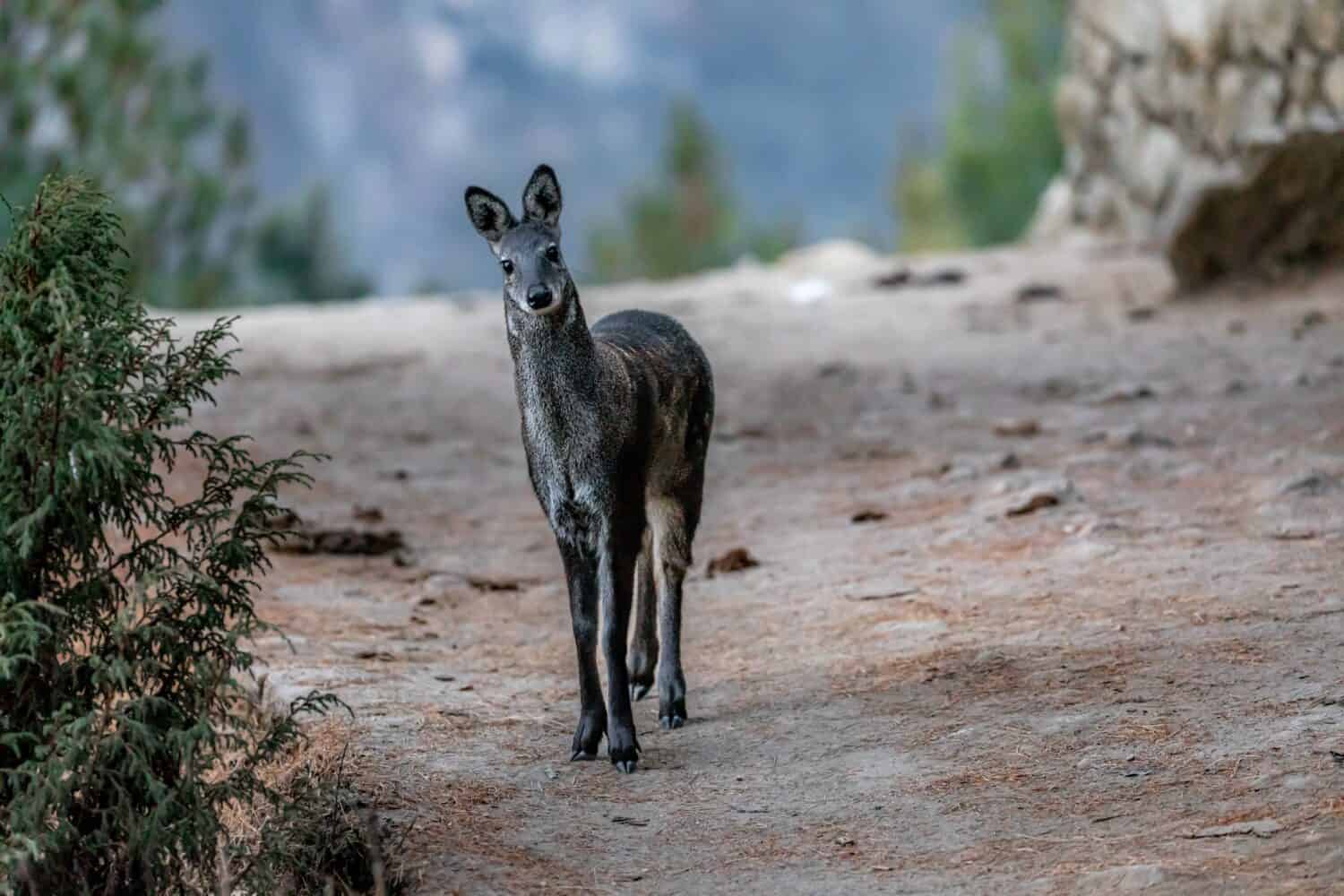
These deer are completely nocturnal!
©Michal Holecek/Shutterstock.com
Musk deer live in the lower portions of Mount Everest as well. While they look a bit like a small deer, they’re a breed of their own, lacking antlers. Their protection mechanism is actually a musk gland that they use to mark their territory!
The musk glands of a musk deer are extremely valuable and are often gathered and used by humans for the production of perfume. Hunting musk deer is illegal in some countries (including China), but the products continue to be sold.
6. Mountain Weasel
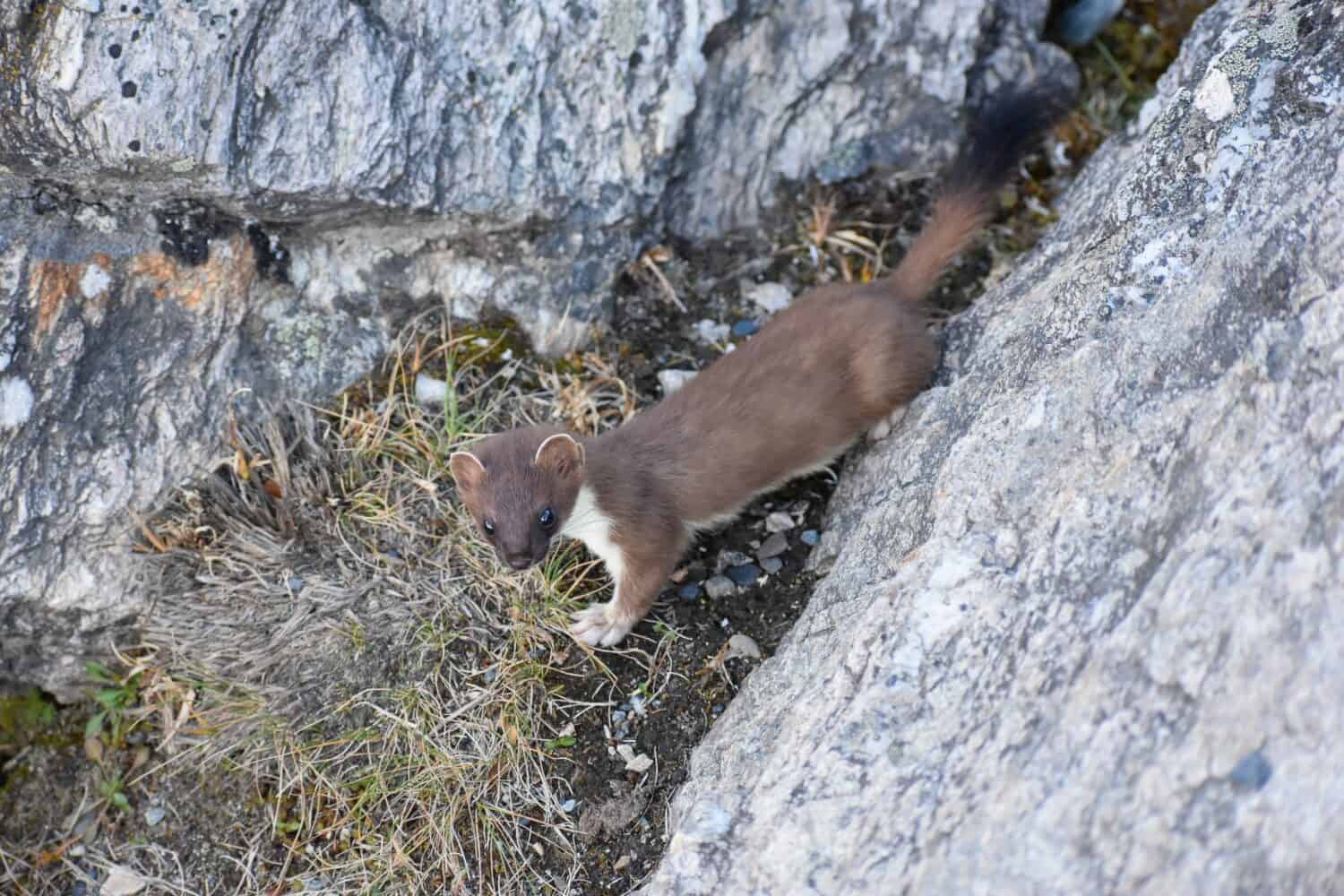
Mountain weasels are equipped with incredibly great vision.
©Derek Rau Studios/Shutterstock.com
For being such tiny creatures, mountain weasels are incredibly tough. These little mammals can survive up to 12,000 feet in elevation, living in little cracks and crevices in trees and rocks. They’re another solitary species and they’re nocturnal as well. Despite their size, they can run and climb with astonishing skill.
Mountain weasels are carnivores and they feed on smaller mammals like voles. Mountain weasels even eat rabbits! They’re an endangered species and have been granted a high level of protection.
7. Yellow-Throated Marten
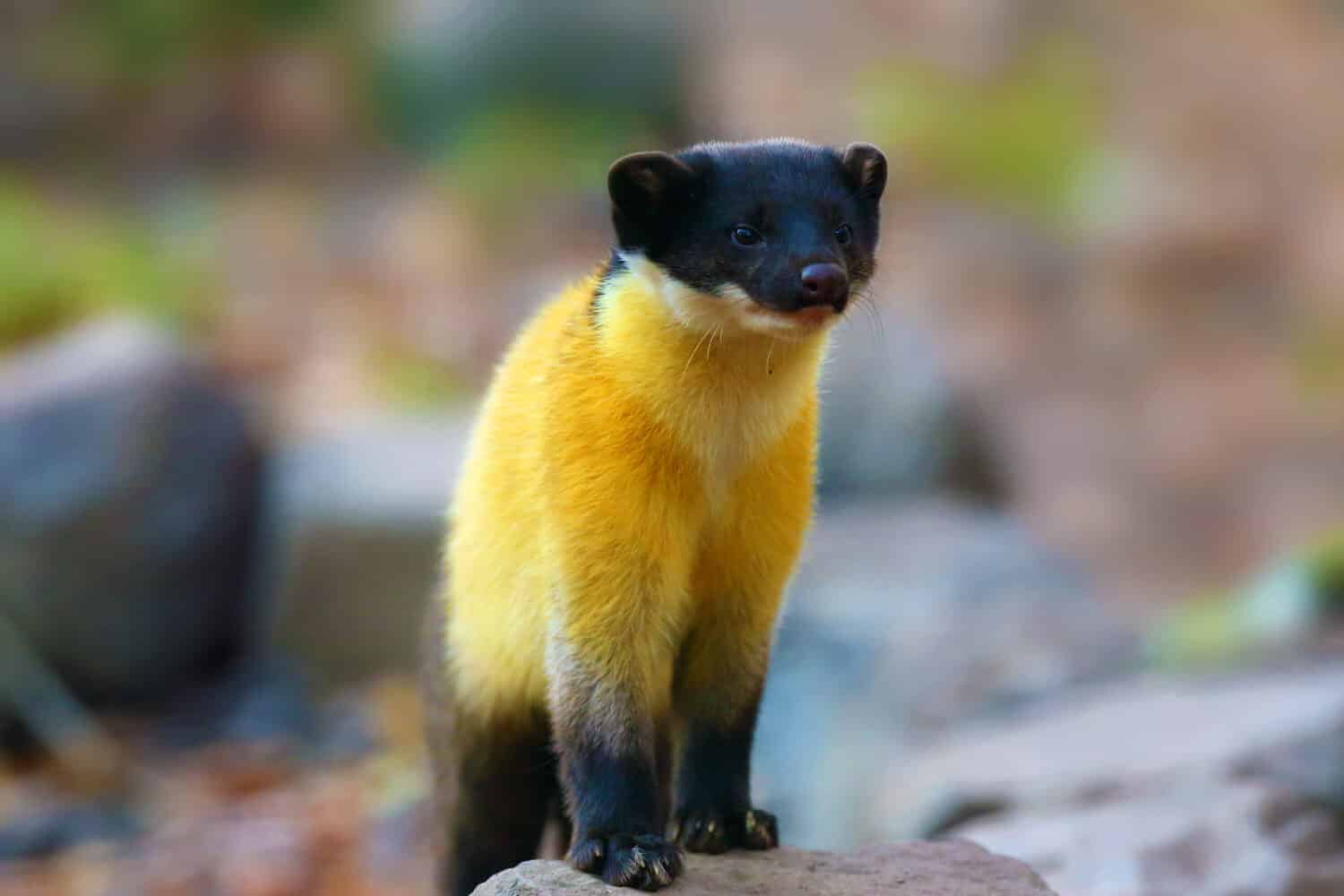
Yellow-throated martens are also known as
kharzaand
chuthraul.
©Karel Bartik/Shutterstock.com
The yellow-throated marten is a similar species to a weasel that lives in the mountains of the Himalayas. Their namesake is obvious, as they have a very unique yellow color on much of their bodies! The animals have a strong, repelling odor that keeps any predators to a minimum. They’re omnivores by nature, enjoying plants as well as animals like deer.
These animals have been heavily hunted due to their fur. This means that the yellow-throated marten is an endangered species. It’s uncommon that people will see them on their hike up Mount Everest, but they aren’t scared of people, nor are they dangerous.
8. Wild Yak
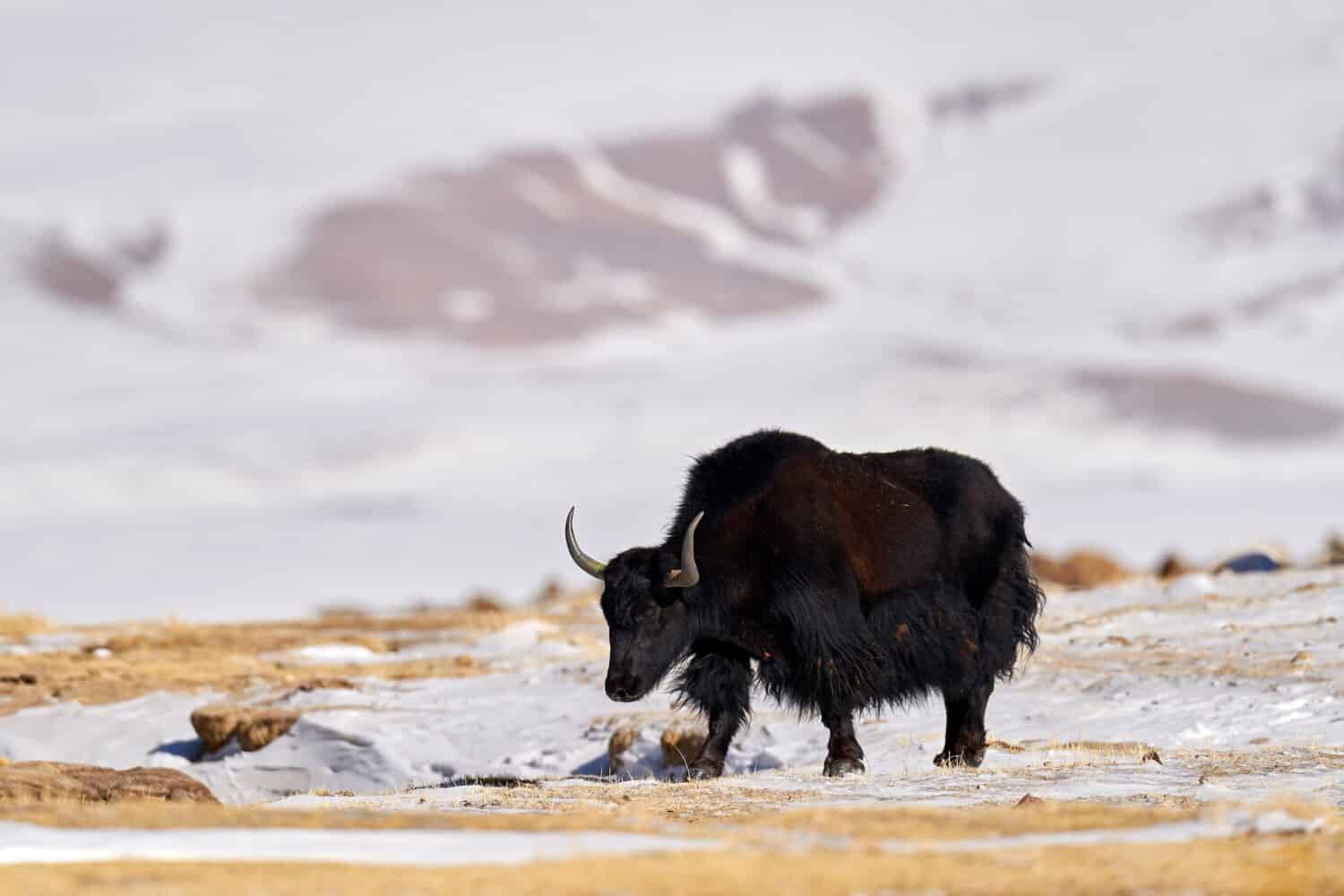
Yaks live in herds of between 10-20 individuals, though packs have been documented with hundreds of yaks present!
©Ondrej Prosicky/Shutterstock.com
Wild yaks are massive. These hulking beasts survive well in the harsh climates of Mount Everest due to their size and thick fur. These yaks live in the highest elevation yet, surviving up to 18,000 feet. They have a thick undercoat beneath their wooly outer layer, making them comfortable and resilient in subzero temperatures.
Wild yaks could theoretically take down all sorts of prey if they so chose, but in reality, they’re herbivores! They eat grasses and lichen and are generally friendly in nature. If you see a yak on Mount Everest, it’s unlikely you will be met with aggression, but as always, proceed with caution. Mother yaks can be the most aggressive, charging if they feel their babies are threatened.
9. Himalayan Goral
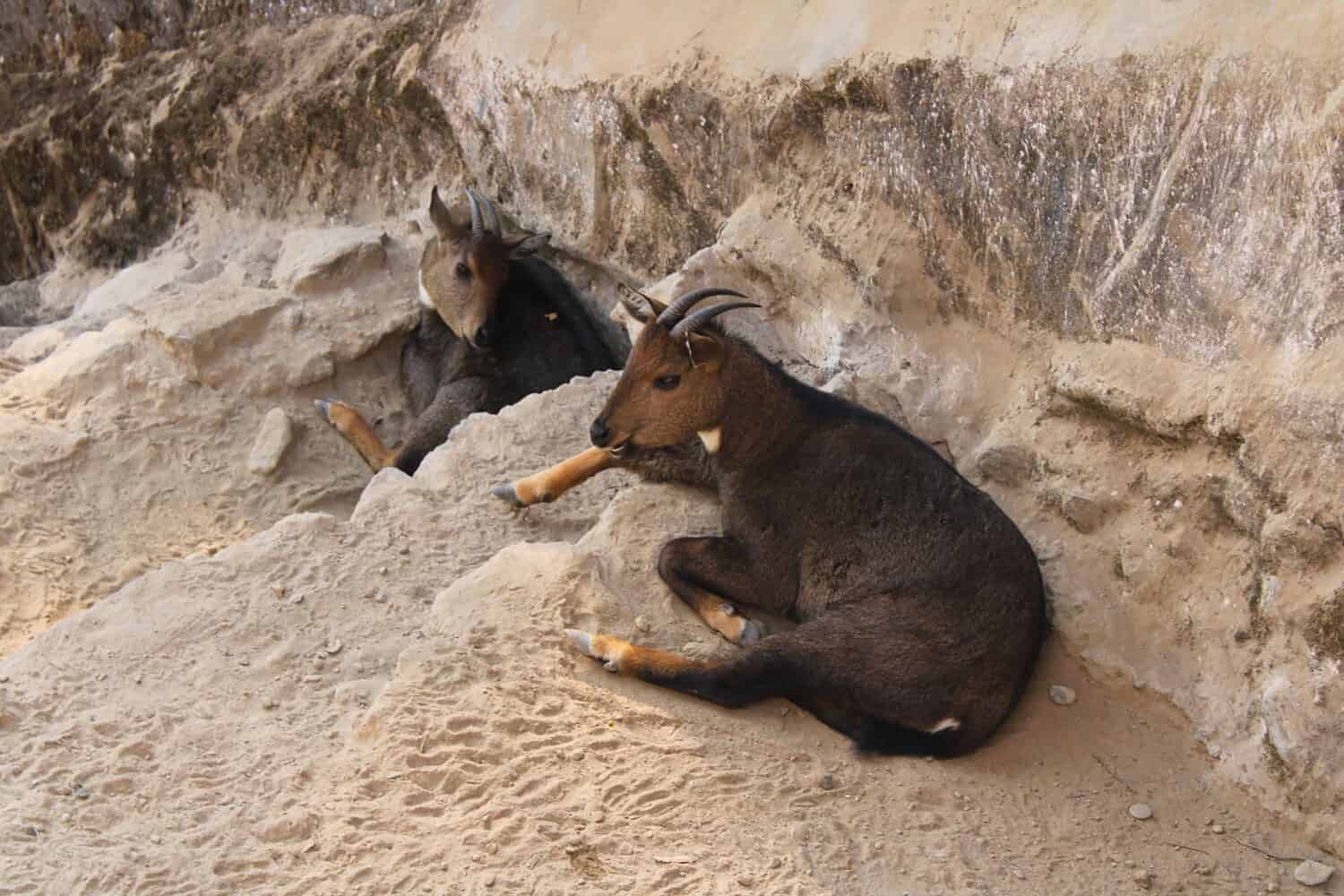
Himalayan gorals are herbivores that enjoy the many plants that grow in the forests of Mount Everest.
©Mbah Purwo/Shutterstock.com
These sweet-looking Himalayan gorals are another type of animal that is present on Mount Everest. These small mammals generally aren’t more than 100 lbs, and while they’re not very social, they pose no threats to humans that may run into them on their trek up the mountain. They travel in groups of between 4 and 10 gorals and generally disguise themself if they see a person.
These species are marked as Near Threatened on the IUCN Red List. They’ve seen a significant population decline due to climate change and hunting. Temperatures are getting too warm for the species to live comfortably.
10. Himalayan Pika
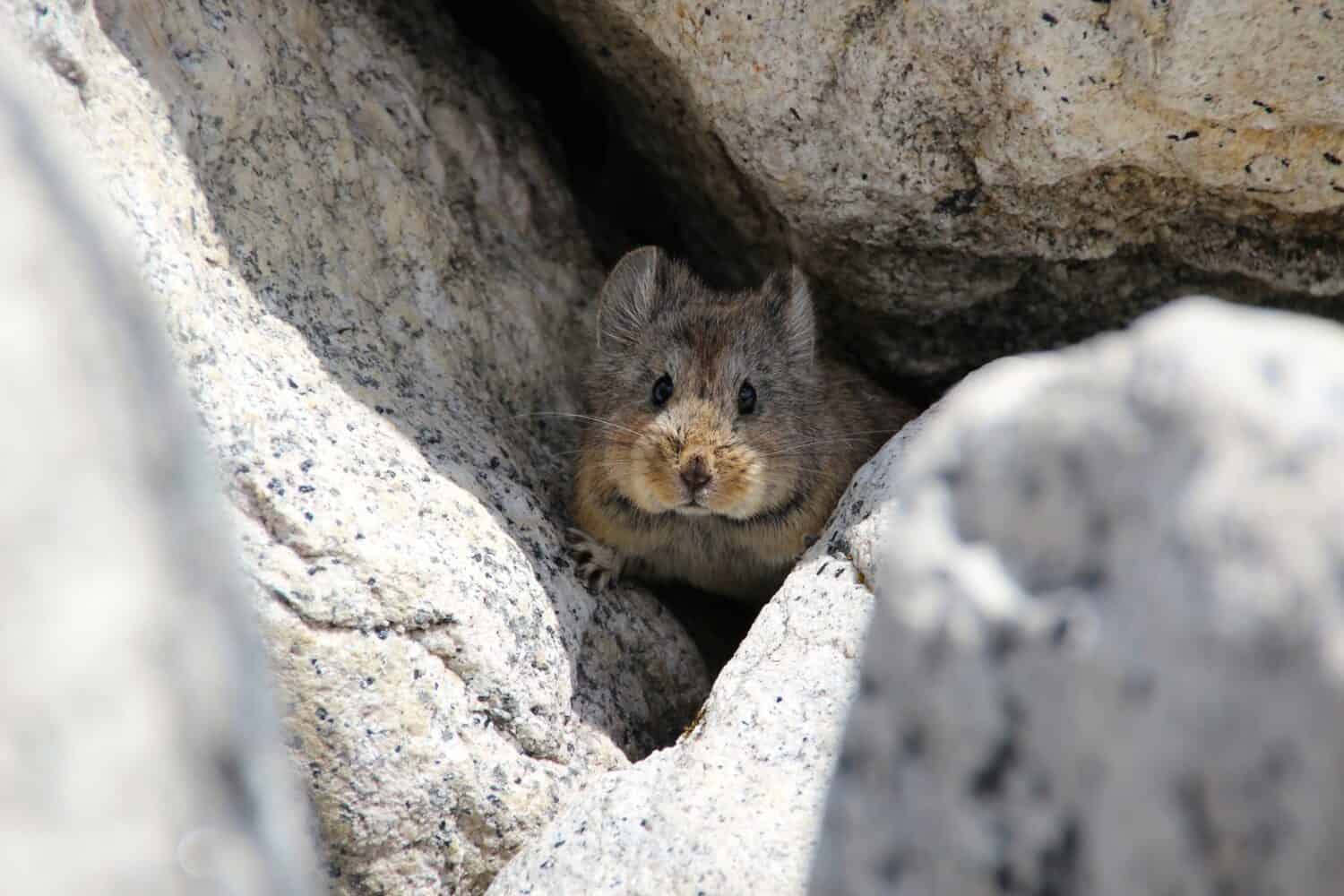
Pikas generally weigh less than 5 ounces!
©Robert Deller/Shutterstock.com
Himalayan pikas have got to be one of the cutest animals on Mount Everest. These little mammals can survive up to almost 14,000 feet in elevation, making them incredibly tenacious for their size. The region of the mountain in which pikas occupy is full of rock fragments and trees, giving the pika a lot of different places to nestle in.
Pikas are omnivores, and the level of the mountain they occupy is stocked full of delicious grasses and leaves. Thankfully, pikas are not endangered. There are plenty of them nuzzled in cracks of the mountain, however, it’s highly unlikely humans will come into contact with them. They are so small that it’s difficult to spot them, and they prefer isolated areas.
11. Blood Pheasant
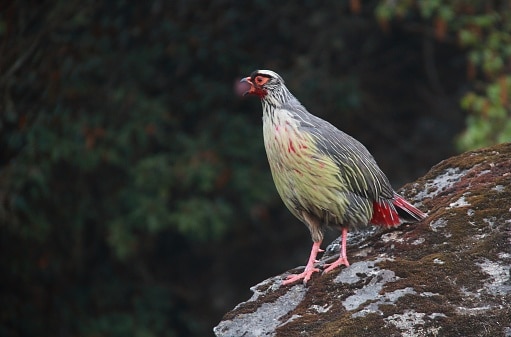
These birds eat a mix of fruit, plants, and bugs.
©suhas anand/iStock via Getty Images
There are some incredible birds that occupy the air of Mount Everest. One of those species is the blood pheasant. This small pheasant is native to the Eastern Himalayas and travels yearly to the Mount Everest region. While their population has been declining to some degree, the IUCN still deems the blood pheasant a species of low concern.
These birds nest on the ground, which makes them vulnerable to trampling. They’re most comfortable in birch trees, and reach elevations of up to 14,700 feet. Because the bird is so abundant, it’s highly possible to see a blood pheasant out and about while exploring the Himalayan Mountains.
12. Himalayan Monal

Himalayan monals are called
daphnesin Nepal.
©Wang LiQiang/Shutterstock.com
One of the most beautiful animals on this list is the Himalayan monal. The Himalayan monal is the national bird of Nepal, boasting feathers of many colors: blue, purple, orange, yellow, and green. The monal is another high-altitude pheasant, reaching elevations of up to 16,000 feet in the summertime. However, when it’s colder in the mountains, they move to lower elevations, often under 7,000 feet.
These pretty birds are tough despite their fancy aesthetic. In the winter, they’re known to dig through snow, looking for a bite to eat. They are not on the IUCN’s list, so if you visit Mount Everest, you may have the opportunity to spot one of these birds. It’s easier to see them in the autumn and winter time, as they condense to lower elevation terrain.
Mount Everest is home to some incredible species. From giant wild yaks to delicate Himalayan monals, many animals survive and thrive in the complicated, chilly terrain of Mount Everest. These animals show resiliency in a large number of ways. The pica will hide in the cracks, while the musk deer will protect its territory with its odor.
The animals that live on Mount Everest are incredibly diverse. From tiny mammals to giant, wooly beasts, each animal finds a way to protect themselves from the elements. The species that survive on Mount Everest are an incredible testament to the wide range of adaptations that exist. If you aspire to hike Mount Everest, consider keeping your eyes peeled for the diverse animals that live in the Himalayas.
The photo featured at the top of this post is © Uwe Gille, CC BY-SA 3.0, via Wikimedia Commons – License / Original
Thank you for reading! Have some feedback for us? Contact the AZ Animals editorial team.






